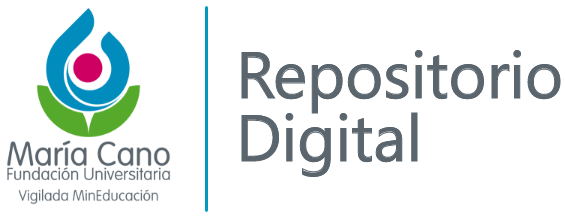| dc.rights.license | Atribución-NoComercial-SinDerivadas 4.0 Internacional (CC BY-NC-ND 4.0) | spa |
| dc.contributor.advisor | Montoya Otavalo, Juliana Andrea | |
| dc.contributor.author | Quiroga Quintero, Princery | |
| dc.date.accessioned | 2024-04-25T19:02:17Z | |
| dc.date.available | 2024-04-25T19:02:17Z | |
| dc.date.issued | 2018 | |
| dc.identifier.uri | https://repositorio.fumc.edu.co/handle/fumc/1109 | |
| dc.description.abstract | El cutting, un tema que expone sobre jóvenes, especialmente del género femenino que deciden atentar contra su integridad física, provocándose lesiones. El objetivo de esta investigación es reconocer la percepción que tienen los adolescentes sobre el cutting del colegio los Libertadores. En esta investigación se aplicó una metodología cualitativa para conocer a la población afectada, utilizando además, textos investigativos, y posteriormente responder asertivamente al problema. La una población de alumnos, 11 a 15 años de edad; una muestra de 6 alumnos, en el que se evidencia el cutting, dentro de los resultados, poco conocimiento del tema; conocen el concepto práctico (corte superficial en la piel). Las causas; a los participantes se les dificulta definir un concepto claro de sí mismos, no se describen físicamente, dan respuestas confusas, coincidieron en que, no les interesa el concepto que otros tengan de ellos, mencionan el desinterés familiar, el maltrato emocional, y argumentan que siempre están solos, algunos mencionan de un trato familiar bueno pero con dudas, son de pocos amigos se observan emociones negativas de tristeza, rabia, y decepción, motivos por el cual practican cutting; En cuanto a las consecuencias, se evidencia manifiestos de tranquilidad, comentarios que exponen desconocimiento de sus actuaciones por parte de sus familiares, unos que aconsejan sobre el tema. Puede deducirse que estos jóvenes consideran que no son importantes en el mundo, por ende, acuden a hacerse daño así mismos para sanar ese dolor emocional, y afirmar que la familia es donde se fortalece la autoestima en los jóvenes. | spa |
| dc.description.abstract | The cutting, an issue that exposes on young people, especially of the female gender who choose to attempt against their physical integrity, causing injury. The objective of this research is to recognize the perception adolescents on the cutting of the College the liberators. In this research, a qualitative methodology was applied to meet the affected population, moreover, using research texts, and then respond assertively to the problem. The population of students, 11-15 years of age; a sample of 6 students in which there is evidence of the cutting, within the results, little knowledge of the subject; you know the concept practical (cutting surface on the skin). The causes; difficult participants define a clear concept of themselves, not described physically, dan confusing answers, they agreed, not the concept that others have of them, they want to show disinterest family, emotional abuse, and argue that they are always alone, some mention of a friendly well but certainly are of few friends there are negative emotions of sadness, anger, and disappointment, grounds by which practice the cutting; As to the consequences, evidenced some who advise on the subject. It can be deduced that young people consider that they are not important in the world, therefore, come to harm as well same to heal that emotional pain, and say that the family is where self-esteem it flourishes in the young people. | eng |
| dc.format.extent | 24 p. | spa |
| dc.format.mimetype | application/pdf | spa |
| dc.language.iso | spa | spa |
| dc.publisher | Fundación Universitaria María Cano | spa |
| dc.rights | Derechos Reservados - Fundación Universitaria María Cano, 2018 | spa |
| dc.rights.uri | https://creativecommons.org/licenses/by-nc-nd/4.0/ | spa |
| dc.title | Percepción sobre el cutting de estudiantes en edades de 11 a 15 años del colegio los libertadores en la ciudad de Inírida 2018 | spa |
| dc.type | Trabajo de grado - Pregrado | spa |
| dc.type.version | info:eu-repo/semantics/publishedVersion | spa |
| dc.type.coarversion | http://purl.org/coar/version/c_970fb48d4fbd8a85 | spa |
| dc.rights.coar | http://purl.org/coar/access_right/c_abf2 | spa |
| dc.description.degreelevel | Pregrado | spa |
| dc.description.degreename | Psicólogo(a) | spa |
| dc.description.program | Psicología | spa |
| dc.identifier.instname | Fundación Universitaria María Cano | spa |
| dc.identifier.reponame | Repositorio Fundación Universitaria María Cano | spa |
| dc.identifier.repourl | https://repositorio.fumc.edu.co/ | spa |
| dc.publisher.faculty | Facultad de Ciencias de la Salud | spa |
| dc.publisher.place | Medellín | spa |
| dc.relation.indexed | RedCol | spa |
| dc.rights.accessrights | info:eu-repo/semantics/openAccess | spa |
| dc.subject.proposal | Cutting | spa |
| dc.subject.proposal | Lesión | spa |
| dc.subject.proposal | Autoestima | spa |
| dc.subject.proposal | Adolescentes | spa |
| dc.subject.proposal | Cutting | eng |
| dc.subject.proposal | Injury | eng |
| dc.subject.proposal | Self-estime | eng |
| dc.subject.proposal | Teenagers | eng |
| dc.type.coar | http://purl.org/coar/resource_type/c_7a1f | spa |
| dc.type.content | Text | spa |
| dc.type.driver | info:eu-repo/semantics/bachelorThesis | spa |
| dc.type.redcol | https://purl.org/redcol/resource_type/TP | spa |


